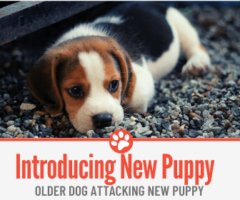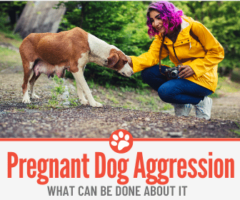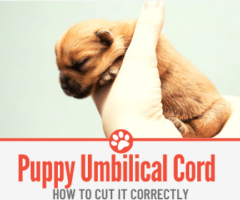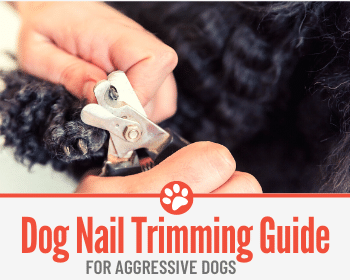 My dog won’t let me cut her nails. They are really long and the sound they make on the floorboards drives me up the wall. I have tried to sit her down with treats, or attached with a leash but she just fights it.
My dog won’t let me cut her nails. They are really long and the sound they make on the floorboards drives me up the wall. I have tried to sit her down with treats, or attached with a leash but she just fights it.
I didn’t want to pay for someone else to do this though, when it seemed like it should be an easy task. So, I did some digging to find out how other people are dealing with this challenge, and guess what I found out?
Most dogs do not like having their claws trimmed! And doing it yourself is not as easy as you might think. I have picked up a few tips along the way now, which I lay out below, but in some cases you might want to get a professional to help.
But, do dog’s nails need to be trimmed?
In the wild, the canine ancestors would be wearing down their nails through running around on rough surfaces, scratching trees, hunting and so on. Their nails grow just like ours and if they are not trimmed on a regular basis they become too long, misshapen and ingrown nails and infections can occur.
Domesticated dogs spend a lot more time indoors, on soft, plush carpets or grass when outdoors. Their nails are just not seeing the wear and tear they were designed to withstand. This means that we, as owners, must incorporate this as part of their grooming schedule. Well trimmed nails will keep your pet happy and healthy.
Reasons to Trim Dog Nails
Nails that are too long are at risk of being torn off. They can easily catch on furniture or the carpet and can cause serious injury. In some cases it might require a trip to the vet, which is costly, as well as unsettling for the dog.
Long nails make walking difficult, and the pressure pushing up into the nailbed can become uncomfortable for the animal or they can get ingrown nails. They may start walking differently to compensate, which in turn will cause problems and pain in other joints.
How to clip dog nails
Dogs’ nails have a live and a dead section. The live section is called the quick and you should cut to about 2mm from the quick. In those with white nails, you can identify where the nail is alive because it is pink in colour. With dogs with black nails, stop trimming when you no longer see a whitish interior. If you clip into the live part you will cause your animal to bleed and a lot of pain and you can be sure they will react and let you know it hurts!
If you struggle to see where the quick starts on dark-coloured nails, clip the nail off in small sections instead of all in one go. As you cut off the small pieces, look at the cut edge of the nail. The curved, bottom part of the nail will be light in colour, whereas the top part of the nail will be mottled light and dark. As you continue to cut the nail you will see a homogeneous grey to pink oval starting to appear at the top of the cut surface. Stop cutting the nail at this point.
The best stance is to hold the clippers at a 45 degree angle to the nails. This should still give you good visibility, as well as clean access to the nails themselves. It goes without saying that a sharper blade will give a cleaner cut and be more comfortable to use.
If you are concerned that the cut nail has sharp corners that might catch on things, you can file them down to make them smooth.
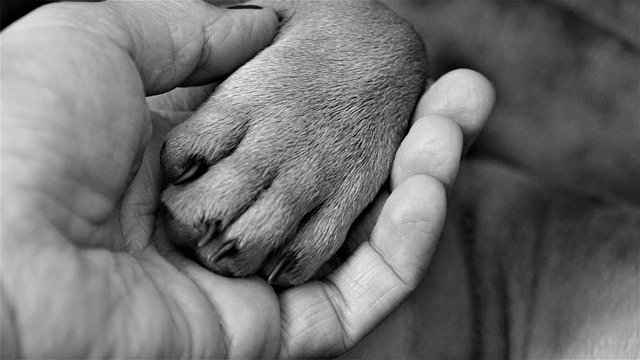
I made my dog’s nails bleed, what should I do?
If you accidentally cut too far and into the quick, you can apply silver nitrate in the form of a styptic pencil. However, dogs seem to dislike this as much, if not more, than the nail trimming itself. It does stop blood flow, although the blood will stop of its own accord after about 5 minutes anyway.
How often should I trim my dog’s nails?
Each animal’s nails will grow at different rates, but once the nails reach the floor it is time to cut them back. You can either inspect the paws on a regular basis to see whether it is time, or listen to when they walk and if you hear a clicking sound against floorboards or stone it is the telltale sign that the nails are too long.
The nails on rear feet grow more slowly and are often shorter, so don’t need trimming as frequently as those on the front.
It is easy to forget about the dew claws, which are found on the inner surface of the paw, unless they were removed as a puppy. Some breeds of dogs, such as the St. Bernard, have 2 sets of dew claws on their rear feet. These must be trimmed just like any other nail.
How to trim nails of anxious dogs
Cutting a dog’s nails is not something the animal expects to happen in their life. It is something we humans have introduced (for good reasons) and can be something the dog dislikes, especially at first. Even handling their paws will feel strange to them, and so that is a good place to start if you want to start trimming their nails yourself. .
The key – it seems – is to begin the process in young animals, so that they get used to the new sensation.
Go slowly and let the dog familiarise itself with you touching its paws. It might take a couple of attempts, but then introduce the clippers and gradually progress to cutting the nails. Make sure he/she has good associations with the activity, so reward with treats and lots of cuddles. Eventually he/she will let you trim the nails without feeling anxious
How to restrain a dog to clip its nails
There are a number of ways to hold your dog still whilst clipping its nails, but the first two of these three techniques are probably the best. They don’t put undue pressure on the dog and the dog’s positioning means you are pretty safe, in case the animal decides to snap or bite.
On a table
Lay your dog on a table or flat surface. From behind put one arm gently over its neck and the other around its torso. This lets you keep the head restrained, as well as the legs. You can bring your hands together and with one hold the paw and the other the clippers.
If the dog tries to stand, lean your upper body over his/her shoulder to apply a bit of downward pressure and prevent him/her from rising.
For dogs that are very wriggly, put them on their side. Having someone to help you makes this task much easier to perform.
The tummy hold
This is similar to the above, but the dog in essence sits on your lap. You have one arm wrapped around their torso and the other around their neck. You can do the trimming yourself, but to be honest, it is a lot easier if someone can help with that part.
The beauty of this hold is that if your dog starts to wriggle you can just lift them up, which makes it hard for them to push against anything with their legs. Otherwise, you can grasp them more tightly and in doing so you stop them from being able to move their legs as easily.
Because one arm is wrapped around the dog’s neck and he/she is facing away from you you can prevent him/her from snapping at you. Depending on the size of your dog, you might find this hold is only really possible with smaller builds.
Dog harness
These can help to hold your dog in place but don’t give you as much control and for that reason I prefer the other holds.
How to cut an uncooperative dogs nails
If you are really struggling to get your dog calm enough to trim their nails, consider filing them instead. That way you will not accidentally cut into the quick, making a tense situation even worse.
This does mean you still need to get to the point where your pet is willing to lift its paw and let you prod it. My best advice is to gently introduce this activity, as I have explained above. Step by step build confidence with your dog, getting them comfortable with handling their paws. Then slowly move on to addressing the nails themselves.
It is really not a good idea to force a dog to have its nails cut, if they are strongly against it. You are endangering yourself by getting into such a situation. If, after multiple attempts at coaxing your dog into accepting this as part of their grooming ritual, you still have a completely uncooperative animal, approach your vet for advice. In some cases the vet may need to sedate your dog to tidy up their nails properly.
If your dog is amenable to having its paws touched and even trimmed, but just won’t stay still, try distracting it instead. A dollop of peanut butter at the bottom of its food bowl is a great technique. The dog will have to search around amongst the rest of the food, giving you time to sort out their nails.
How do I sedate my dog to cut his nails?
Sedation should only be performed by trained veterinary professionals. You wouldn’t administer such drugs on yourself at home, and neither should you with your pet. There are many different types of sedatives and what is best suited to your animal and its medical history will be determined by the vet. Administering the correct dose is a skill in itself and is another reason why you should not be doing this at home.
There are, however, some drugs which you can buy over the counter and give the dog yourself. Note though, that you should still discuss these plans with your vet in advance, to make sure you are buying the right thing and giving the right amounts.
In some cases, natural remedies can help alleviate anxiety or nervous symptoms.
-
Aromatherapy works in animals, as it does in humans. Dot a few drops of lavender oil onto your dog’s back or upper neck, where he/she can sniff the calming aroma.
-
Pheromones are another option. Sentry calming collars, or a comfort zone diffusers with appeasing pheromones might be enough to relax your pet. The pheromones activate sensors similar to those in a puppy when it smells its mother.
-
Herbs can also be an alternative. Add them to food or dose as advised on the label. Don’t give to lactating dogs or puppies under 2 months old though.
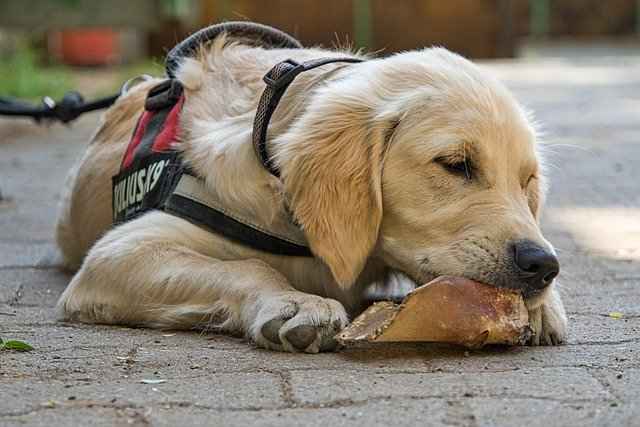
What should I use to trim my dog’s nails?
There are specific clippers on the market for trimming dogs’ nails. You can choose from the guillotine or scissors types. The guillotine type is the easiest to use with dogs, but if the dog’s nails have grown too long and are curling back in on the toe pad, the scissor type clippers are the better choice for the job.
If the dog’s nails have grown so long as to curl and dig into the toe pad you must address the problem immediately, or the animal will cause itself a lot of harm. Dew claws are the exception. They still need to be cut, but as they hang off a flap of skin, they exert less pressure into the foot. Their location also means you can more easily maneuver the nail to gain access to cut it, so using the guillotine clippers is just as feasible in those circumstances.
The guillotine clippers act, as you might imagine, like a guillotine. The nail is put through an opening and when you push down on the clippers a blade comes down to chop the end off. The scissors type is like two blades coming together and should be placed at a right angle to the nail.
With the guillotine clipper, ensure that the cutting blade is facing you and not the dog. The screws on the handle should be facing the dog. Having the clippers in this position means you are unlikely to accidentally cut into the quick, because the actual cutting blade will be further away from the animal.
How NOT to trim a dog’s nails
It might have worked for one TikTok celeb, but do not spread peanut butter on your forehead and try to trim your dog’s nails whilst it is licking the treat off your head. You are extremely likely to get mauled. If anything startles your animal, or you don’t do an excellent job at trimming the nails, and accidentally cut into the quick, you will have the powerful jaws of a canine digging into your face.
Your dog biting you in such circumstances is not surprising and they should never be put into situations where they might accidentally do something like that.
This technique leaves you with little control over the animal. None of the limbs are restrained and your head is right near their jaws. You are also incapable of reading their body language, because you are facing down, looking at their paws.



